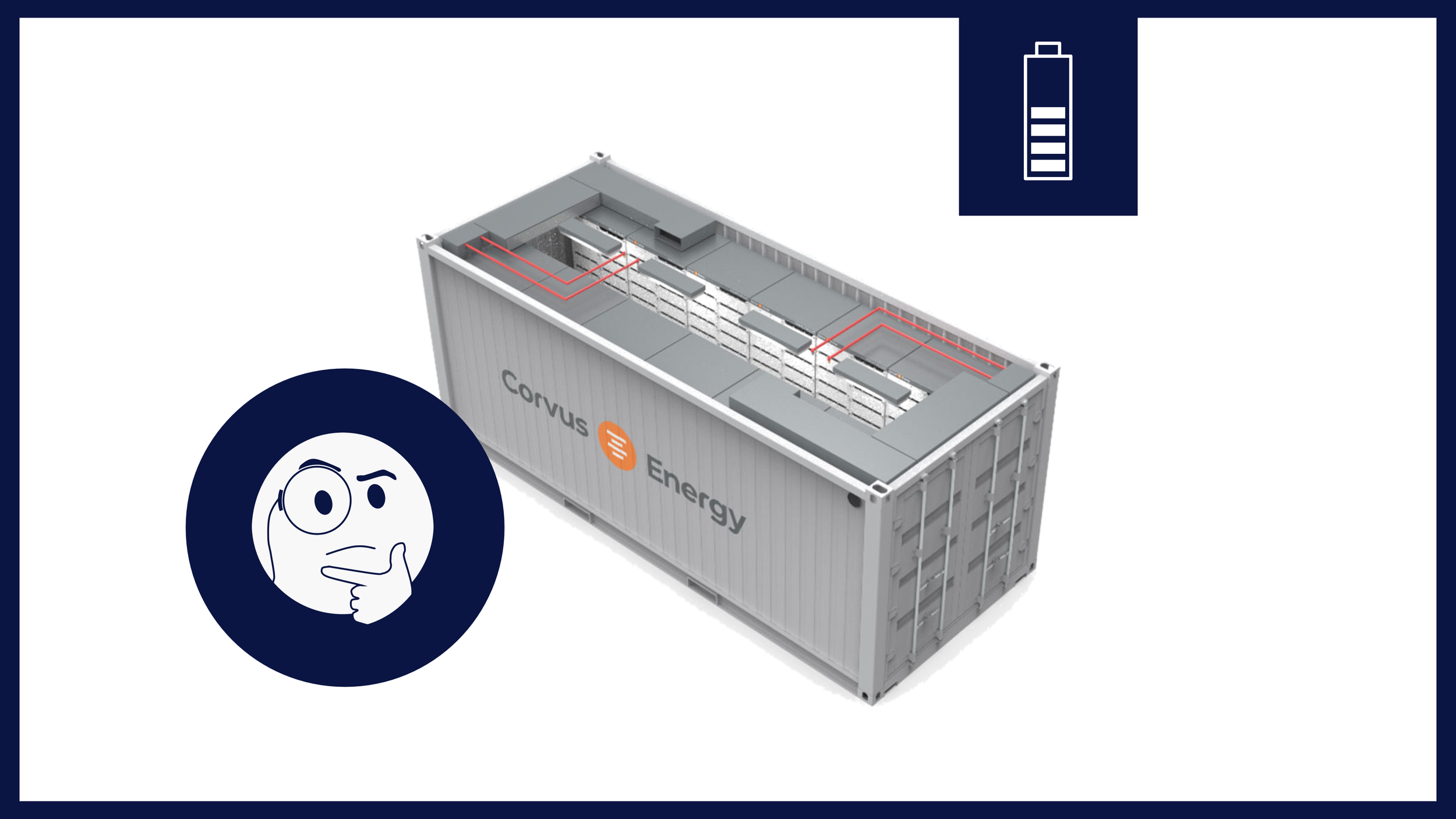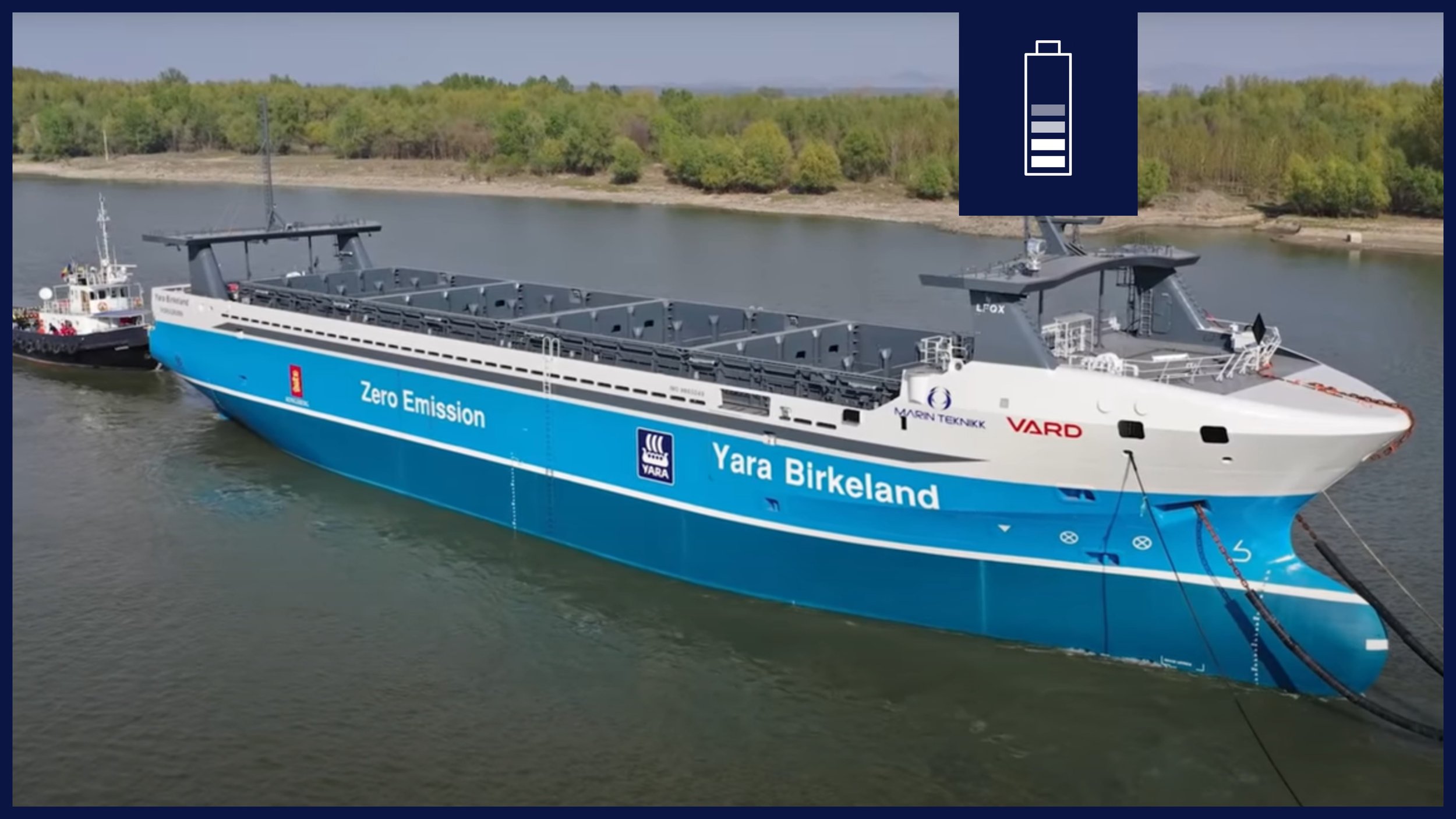Case studies | Find examples on decarbonization measures, costs and regulations to benchmark your business case
FuelEU pooling with full electric chemical tanker
This case study determines the effects of pooling a fully electric small-sized chemical tanker with similar type vessels in the context of FuelEU Maritime. The results show that a single electric ship can include up to 69 ships in its pool in 2025, each ship consuming 2,555 mT MDO per year.
Mobilyze Renewable Energy Units (HBEs) with Robert Gunsing
Renewable Energy Units - Hernieuwbare Brandstof Eenheden - are a Dutch system of certificates based on the EU Renewable Energy Directive (RED). Under the system, parties that produce liquid fossil fuels for transport have an obligation from the government to purchase REUs. Per year, €1 billion REUs are traded in the Netherlands. You can earn between 4.5 and 18 eurocents per kWh ‘sold’ to a vessel, for example when using shore power.
COSCO 700 TEU Full Electric Container Ship
The N997 has two propulsion motors with a capacity of 900 [kW] each and a total battery capacity of 50 [MWh] - best estimate currently available. The 120 meter long ship has a fully electric drive, can carry up to 700 TEU and is able to swap battery packs en route. The vessel is designed for Chinese inland and coastal waters, covering over 600 nautical miles of routes on the Yangtze River.
MoU for North Star Support Vessels on Offshore Wind
Maersk’s Stillstrom and North Star have signed a Memorandum of Understanding (MoU) to accelerate the adoption of offshore charging and vessel electrification technologies for Offshore Support Vessels (OSVs) in the offshore wind sector. Offshore charging hubs will enable the vessels to recharge their battery systems using wind energy while in the field.
Inside a Battery Container
The Corvus BOB (Battery On Board) is a standardized, class-approved, modular battery room solution available in 10-foot and 20-foot ISO high-cube container sizes. The complete system comes with battery, monitoring system, HVAC , TR exhaust, plus firefighting and detection system. The plug and play battery room simplifies integration into any system integrator’s power management system on board a ship. The battery cells have passive thermal runaway protection, and are type-approved according to DNV.
Maritime Battery Forum with Syb ten Cate Hoedemaker
During the lunch and learn, current forum Director Syb ten Cate Hoedemaker will exchange knowledge and experience from the usage of batteries within the shipping and offshore industries. You will learn which batteries will suit your vessel, plus discover the costs and payback for different operational modes. Which battery suits your vessel, your needs, your operational profile? This is the key question discussed in this lunch and learn with Maritime Battery Forum.
How to decarbonize your ship - Full Electric Tugboat
This is a case study on how to decarbonize a tug by making it full electric. It is an homage to Damen’s electric tug ‘Sparky’. In practice, fully electrifying a vessel means to install a - very large - battery pack, in this case at least 3 MWh. This would also be the largest cost component, outweighing switchboard modifications, inverter and other electrical equipment. Cost reductions in OPEX/dayrate are high, between 50% to 90% in extreme cases.
Damen’s Sparky - their first full electric tug
Damen’s first all-electric harbour tug, the RSD-E Tug 2513, is a high-powered tug with 70-tonnes bollard pull, capable of manoeuvring even the largest vessels. It can undertake two or more assignments before being recharged, which takes just two hours. The battery pack size is 2,800 kWh, resulting an approximately 1,400 kW of charging power required. The battery pack is design for the vessel’s 30 year lifetime.
Inside The World's First Electric Cargo Ship - Yara Birkeland
Dubbed ‘the Tesla of the seas’ this fully-electrified, fully-autonomous cargo ship is already making waves. The Yara Birkeland has a 7MWh battery, charged by Norwegian hydro power. She can carry a little over 100 containers. The ship cost about 25 million dollars, about three times a “conventional ship price”, but will nonetheless cut OPEX for Yara by 90%.
Get Ready for the Alfa Lift, an Electric-Hybrid Heavy Lift Crane Vessel
The Alfa Lift, a new build heavy lift crane vessel owned by Offshore Heavy Transport, is on track to enter service by early 2022. The vessel features a 3,000 ton main crane, 10,000+ m² smart deck which can be fully submerged to a depth of 15 meters and a electric-hybrid battery system made by Kongsberg.
Wärtsilä 54 MW Power Barge
In 2020, Wärtsilä was awared a combined contract by Therma Marine Inc. (TMI) for a barge-mounted 54 MW / 32 MWh energy storage system. The power barge consists of ten Wärtsilä GridSolv Max systems, supported by the the GEMS energy management platform. Total costs of this power barge are estimated at €16M for the battery packs plus €8.1M for the power equipment excluding engineering and installation.
Battery Recycling, made by Northvolt
Northvolt has partnered with Hydro to establish a first-of-its-kind battery recycling facility. The recycling plant will come online in 2021 in Fredrikstad, outside of Oslo. At commissioning, the Hydro Volt plant will have initial capacity to process more than 8,000 tonnes of batteries per year – roughly the equivalent of 23,000 moderately sized EV batteries. Northvolt is aiming for 50% recycled material in new cells by 2030.
EV Battery Prices Plunge 89% in Ten Years
The price of a lithium-ion battery pack used to power an electric vehicle has plunged 89% in the last decade, from $1,100 per kWh to $137 per kWh. Marine batteries still cost significantly more, ranging between $800-$1,000 per kWh for retrofits to $500 per kWh for newbuilds. DNV expects the cost of batteries to be reduced by 56% by 2025.
Batteries that charge up to 80% in 15 Minutes
Volkswagen-backed QuantumScape is building a solid-state lithium metal battery for electric vehicles that it says should allow a car to charge to 80% of its full capacity in 15 minutes.
Hurtigruten’s New Hybrid Ships
Designed in 2017 and launched in 2018, Hurtigreten has launched two new hybrid cruise vessels, the MS Roald Amundsen and MS Fridjof Nansen, that can sail fully electric for up to 30 minutes. Not only will it significantly reduce emissions, a hybrid system is also extremely quit. Arctic exploration has never been so much fun!
Tesla’s Battery Day from a Maritime Perspective
Using Tesla’s announcements of Battery Day, DNV expects the cost of batteries to be reduced by 56% (measured in $/kWh) by 2025. Worldwide, DNV predicts that passenger electric vehicles are likely to start outselling their internal combustion engine counterparts from 2032 onwards. In North America, Europe and China this will take place well before 2030. Tesla’s success could spill over from land-based vehicles into adjacent transport sectors. On the assumption of success on all fronts, Tesla will achieve the critical battery density for short range electric airplanes – namely 400 Wh/kg with high cycle life.
What are Solid-State Lithium-Metal Batteries?
Solid-state lithium batteries do not have a traditional anode, but one made up of pure lithium when charged.
Making the Impossible Possible
This blog sketches a vision on how to convert the largest crane vessel in the world - Sleipnir - owned by Heerema Marine Contractors, to a zero-emission vessel. Several promising carbon reduction measures are combined which are technically viable and based on matured technology including electrification and BES, solar panels, synthetic fuels, CCS and possibly hydrogen combustion.
Ørsted and Maersk to Test Offshore Vessel Charger
Maersk and Ørsted are building a ‘power-buoy’ that can act as both a mooring point and a charging station for vessels, enabling them to turn of their engines when laying idle.
Recycling vehicle batteries
Helen Czerski went to Wendeburg in Germany to see if it really is possible to recycle the materials in vehicle batteries. She shows how this new and rapidly growing industry is developing and coming up with some interesting results, with lithium-iron batteries being economically recycled up to 70% (91% including graphite). Please send this to all the people you know who say 'what about when we throw all these fancy batteries into landfill.




















